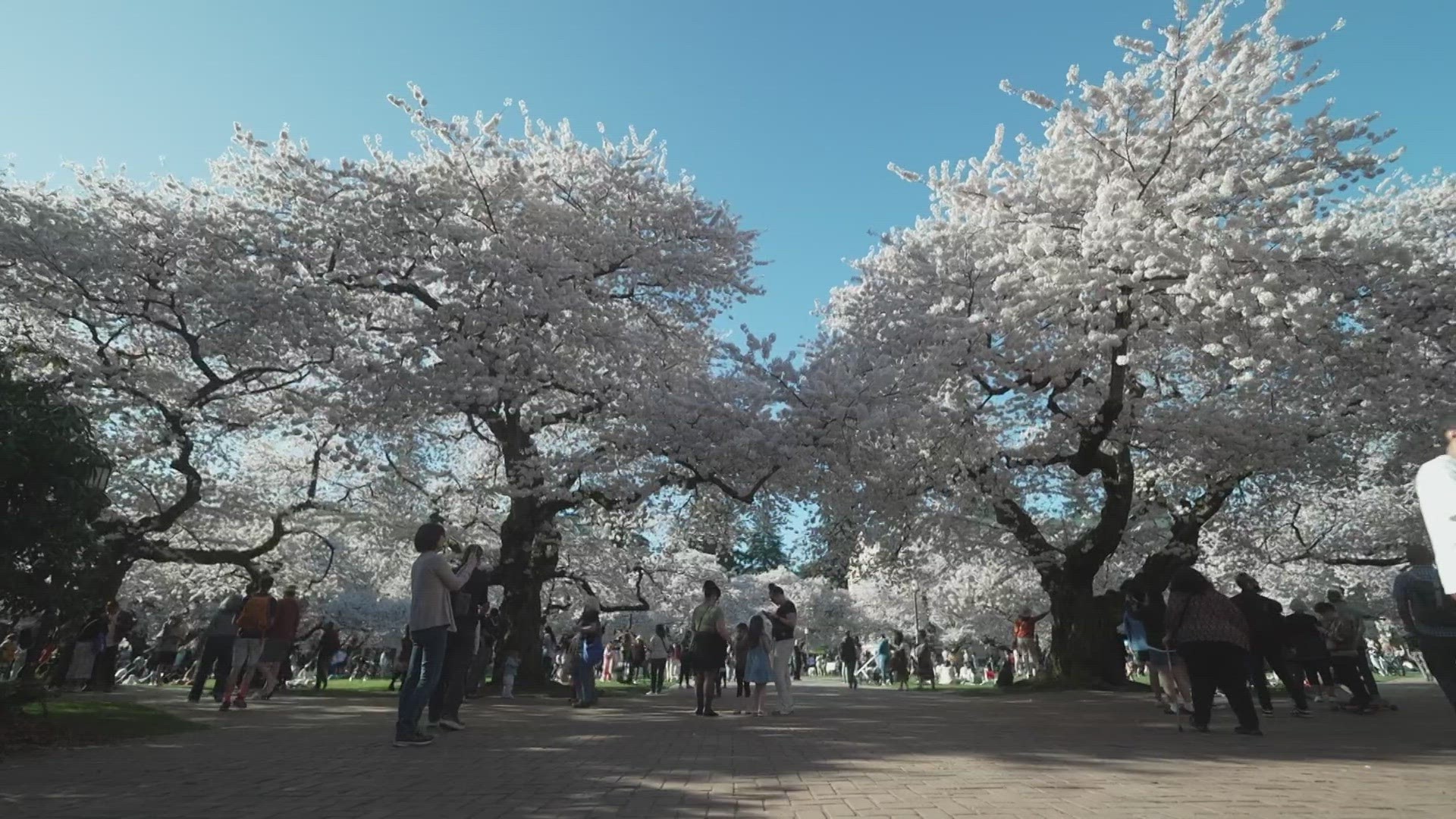SEATTLE —
A team of University of Washington researchers is in the final stages of finalizing a tool that will help improve the campus’ iconic cherry blossom forecast every year.
The University of Washington typically publishes an estimated timeline for peak bloom timing starting in early March. That estimate will soon improve with this new tool.
Autumn Maust is a Ph.D. candidate in the School of Environment and Forest Science and said to determine the timing, scientists watch the buds development and the 10-day forecast.
“That magical date or range of days that we give out to the public is not only based on our understanding of how long each phase will last but also how warm the temperature will be,” Maust said.
UW scientists are in the process of figuring out a magic number called “degree days.” The final degree days are the unit needed for the flowers to hit the next stage and ultimately bloom. This number will be published once this research is complete.
That number is hit faster the warmer the air temperatures.
“The warmer it is, the more degree days are going to accrue more rapidly," Maust said. "So for example this weekend we had record high temperatures in Seattle, which meant that the bloom actually occurred a little earlier than we were expecting it to.
A simple way of thinking of degree days is like a piggy bank. The warmer the temperature, the more you put in the bank. Then, when a final goal total is hit, it’s time to bloom.
This research is years in the making. It started in 2018 when scientists began gathering fine-scaled data about the phases of the trees to have a better understanding of the timing each phase takes, layering it over observed temperature to figure out exactly how temperature impacts the timing.
Maust estimates the degree days for the UW quad will be in the 75-100 range.
Washington D.C’s iconic cherry blossoms use degree days, but their number is much higher. In D.C., the flowers reach peak bloom after accumulating 221 degree days.
Maust said the reason D.C.’s is so much higher is because that area has much colder winters. She said cherry blossoms need a cold period then a warm period to bloom. The trees will need more significant warming if the cooling is extreme.
UW’s final study with the official degree days metric for the quad’s cherry trees is expected to be published in the summer of 2024, and implemented in forecasting for the first time in the spring of 2025.
Peak bloom is reached once 70% of the flowers are in bloom. Peak bloom can last 2-3 weeks, depending on the weather once peak bloom starts.
To stretch peak bloom as long as possible, ideal conditions include cooler temperatures, very little wind and limited rain. These conditions could keep the bloom for three weeks.
There are 29 cherry blossom trees in the University of Washington's quad. Most are nearly 90 years old.

